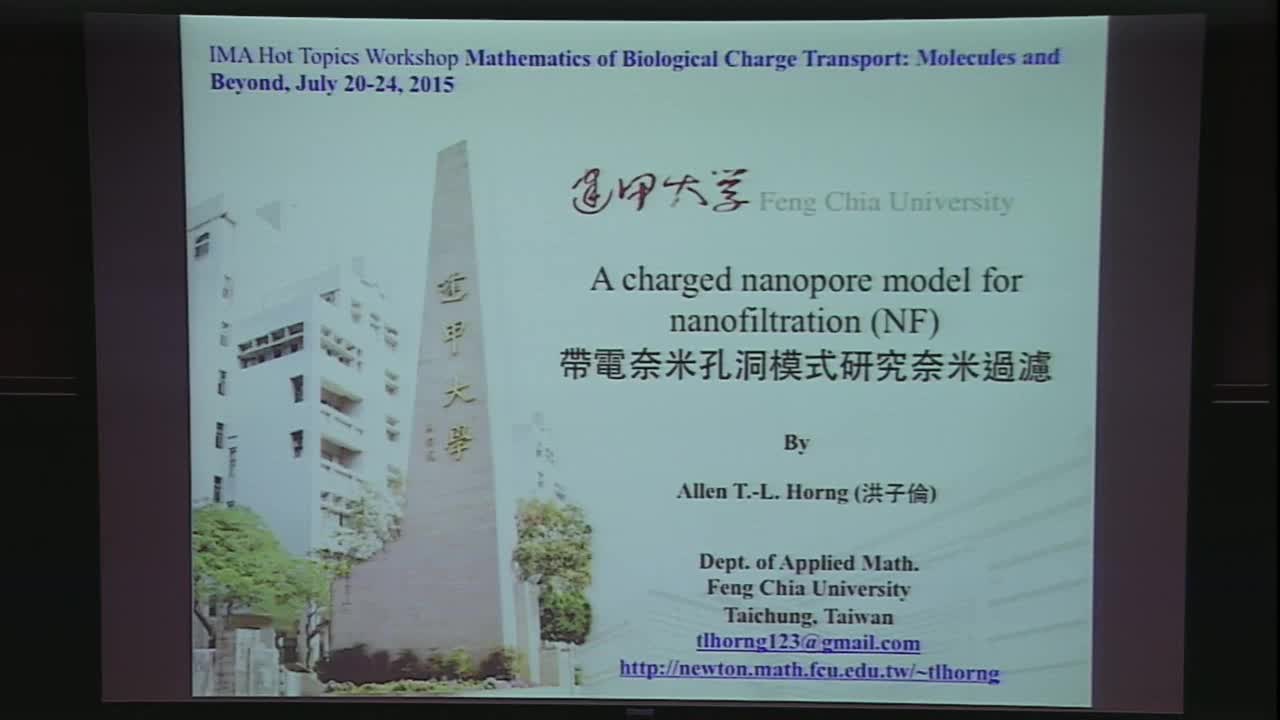A Charged Nanopore Model for Nanofiltration
Presenter
July 22, 2015
Keywords:
- Transformation geometry
MSC:
- 97G50
Abstract
Nanofiltration (NF) using membranes with numerous nanopores has gained its popularity in water treatment like desalination. Overlapped electric double layer (EDL) in charged nanopores makes the membrane to be ion selective and reach high rejection rate for salts when driving electrolyte through nanopores by pressure. It has its advantage over reverse osmosis (RO) with smaller pressure exerted and larger water throughput. Here a charged nanopore model is used to describe the physics and geometry of NF. Since the salt rejection process involves convection, diffusion and electro-migration of ions, joint of Poisson-Nernst-Planck (PNP) and Navier-Stokes (NS) equations is employed to study this problem. Steric effect would be significant inside nanopores, and a modified model of PNP with steric effect considered is actually used here. The computational results will be compared with traditional 1D model such as DSPM-DE (Donnan Steric Pore Model-Dielectric Exclusion), and the mechanism of salt rejection will be discussed. We hope we can gain as much physical insights as possible from such a model of simple geometry, and apply to much complicated charged nanopores like ion channel on cell membrane in the future.
